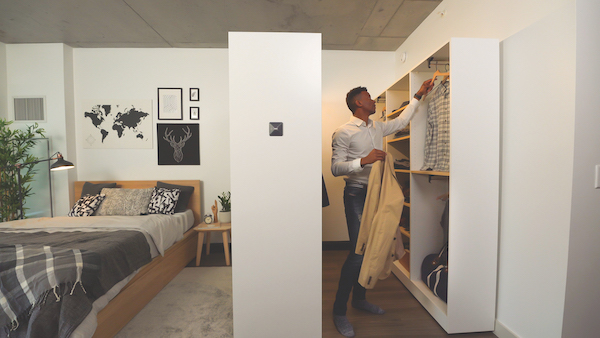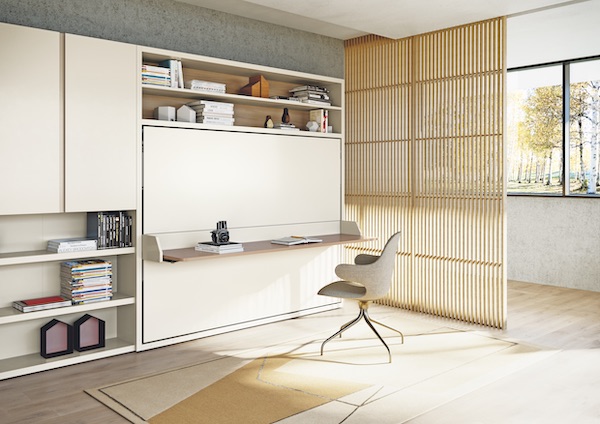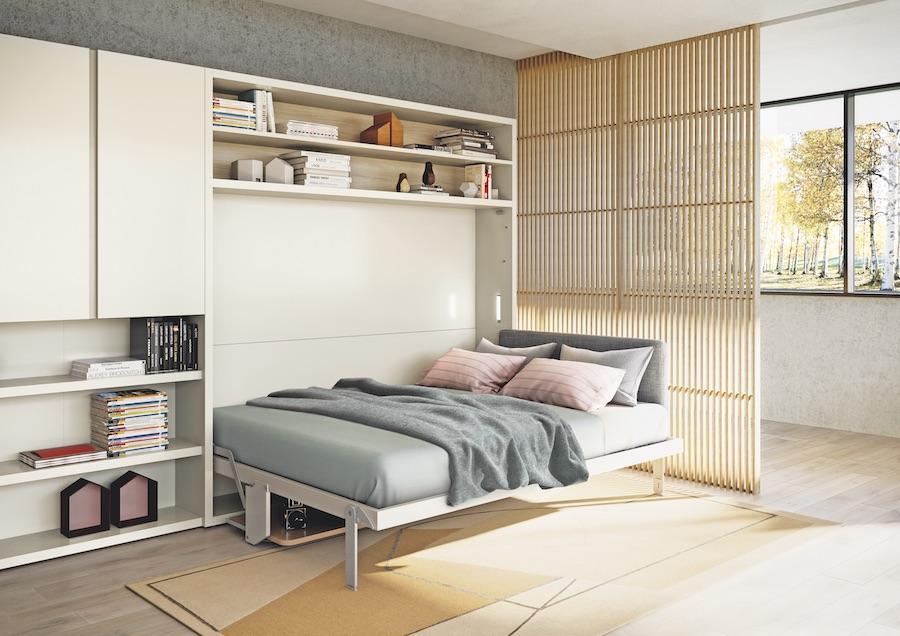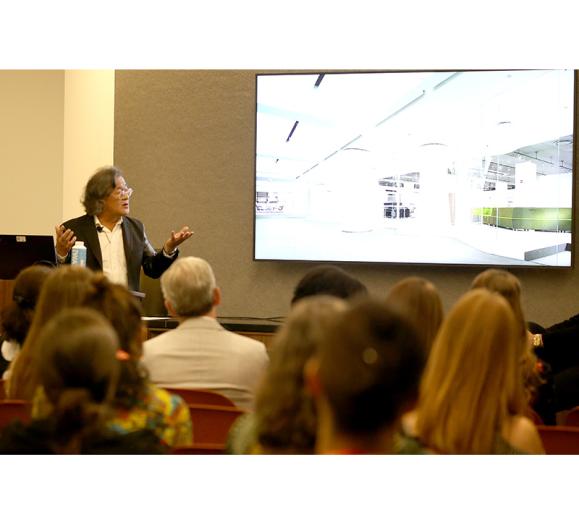In urban settings, small space living is a matter of supply and demand. As young — often single — people flock to cities, larger homes sit vacant while studio apartments are scarce. Cities and developers are making room for more people with less space, which means living spaces are shrinking and prices are rising. Still, these areas are convenient and desirable, and interest has been on the rise for a while now.
In the past, many urban small space dwellers were willing to compromise on the size and features of their homes in exchange for living in a dynamic city with activities and destinations outside the home, says Hasier Larrea, Founder and CEO of robotic interiors company Ori. The pandemic has changed that.
“You could hear things like, ‘I live in a very tiny shoe box in New York, but because I don’t spend time at home, I’m always working or I’m having dinner out,’” he says. “That’s completely shifted because now people are seeing the demands that those spaces need. Our homes need to be a place to work, to exercise and to relax. When they look at spaces now, no matter how small or big they are, they’re starting to expect more from those spaces.”

But less square footage does not have to mean less functionality, thanks to modern furnishings. Ori has developed robotic furniture that adds flexibility and efficiency to small spaces with voice or touch controls. Gone are the days where one room serves one purpose, Larrea says.
Give Everything a Function
In a small space, every choice must be purposeful. With limited square footage, each item must have a specific function, or even more than one — a sofa that is also a bed, a table that can become a desk, a pouf that can become an end table. Items must be chosen with care and purpose.
“I think that because our lives are so chaotic and stressful — our work is being brought into our homes, we have protests going on across the country, we have high unemployment rates — everyone is rethinking their environment and what is going to make them feel healthy and well,” says Challie Stillman, Vice President of Sales and Design for Resource Furniture. “Stripping out all of the noise, all of the clutter, finding really great storage solutions that makes a really cohesive space and bringing more greenery into our homes are the trends that we’ll be seeing going forward.”
Stillman uses bedrooms as an example. When once a bedroom was seen as a sanctuary to retreat to after a long day, it now, particularly for small space dwellers, doesn’t have that same impact.
“People are definitely rethinking the bedroom,” she says. “You realize when you’re home all day long, that that room dedicated to your bed isn’t serving you any purpose. We’re finding a lot of people are considering wall beds because it enables them to put their bed away and turn that room into a home office, a den or into some second function.”
The balance of form and function is often brought up in the discussion of small spaces, but Stillman suggests a third element is even more important: quality. Items in small spaces, particularly those with multiple functions, must be able to stand up to frequent use. As consumers become more concerned with sustainability, it’s important for designers to select pieces that have longevity and won’t end up in a landfill.
The Way of the Future
Resource Furniture specializes in multifunctional customizable furnishings that can meet the exact needs of designers and their clients. Stillman says the wall beds are their most popular offerings, not only because they fold into the wall to save space, but also because when they are folded away, they turn into something else.

“It’s not just a bed that gets put up in the wall,” she says. “It transforms into a sofa or it transforms into a dining table. One of our most popular items of late is called the LGM. It’s a wall bed with a bookcase and a desk built into the front of it, so it’s great for a home office/guest room or main room.”
This pandemic-induced home office resurgence has also impacted Resource Furniture’s other popular category: transforming tables.
“Coffee tables can turn into dining tables or they can be a desk,” Stillman says. “You can work on your laptop or have a wireless keyboard at your height-adjustable coffee table and cast your laptop screen onto your TV. So that’s a different way of thinking of the home office.” The company also offers hidden desks, with surfaces that drop down to reveal the desk and can be put away at the end of the workday to switch into night mode.
While the day-to-day realities of coronavirus are still somewhat uncertain, Larrea says the effects will be felt on clients as they consider their future living conditions. He anticipates that demand for customizable, flexible solutions will rise as people realize their living spaces are not serving them.
“No matter where we land with this crisis, meaning whether it takes six months, a year, two years to truly be kind of out of this wave of the pandemic, people will never forget what it meant to live in a space that was not adapting to them or to their activities,” Larrea says. “I think the fact that people are going to expect and demand more from their spaces is something that is going to carry into the next several years.”
Some manufacturers are already seeing the impacts of these expectations. Resource Furniture does not have an e-commerce presence and its experiential showrooms are all closed due to COVID-19, yet Stillman says the company’s sales have increased during the pandemic.
“We are tremendously optimistic,” she says of the post-coronavirus home furnishings market. “I think that demand will be pumped up, and people are completely rethinking their use of space and their ability to work from home. If they aren’t planning trips or planning and not spending so much money on commuting or eating out, they’re going to be repurposing those funds toward making their home a real sanctuary.”







